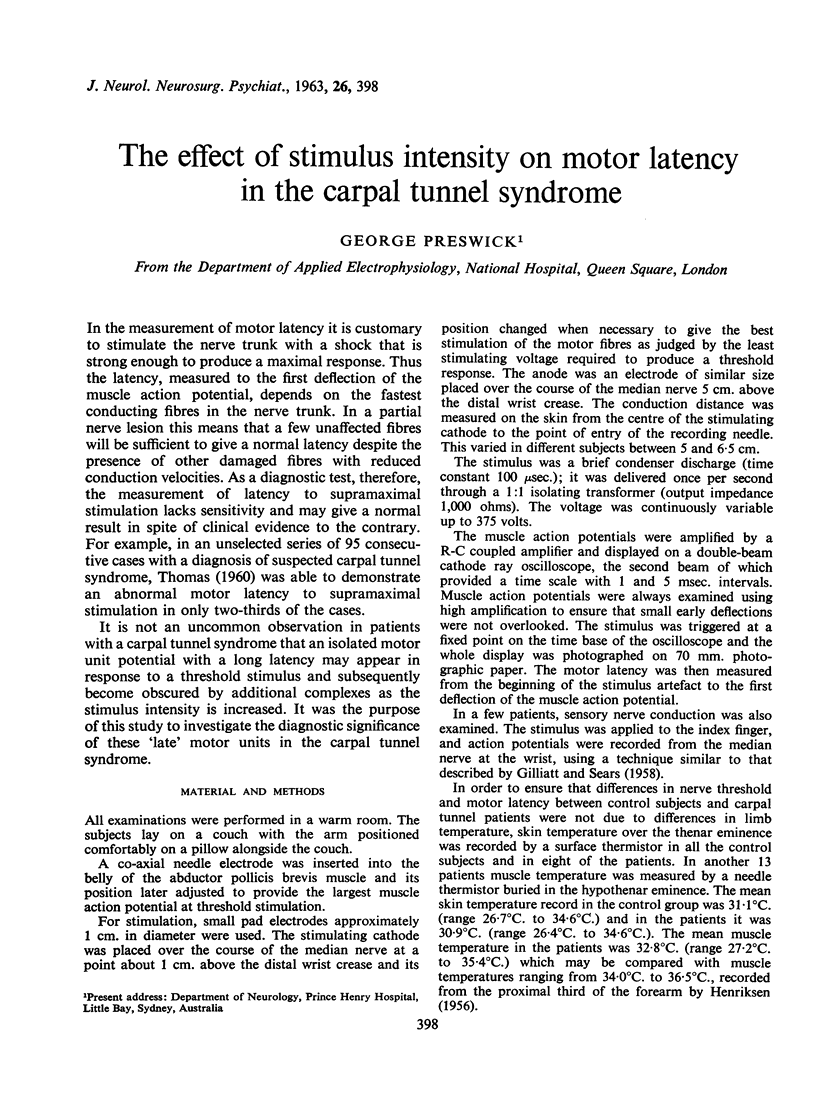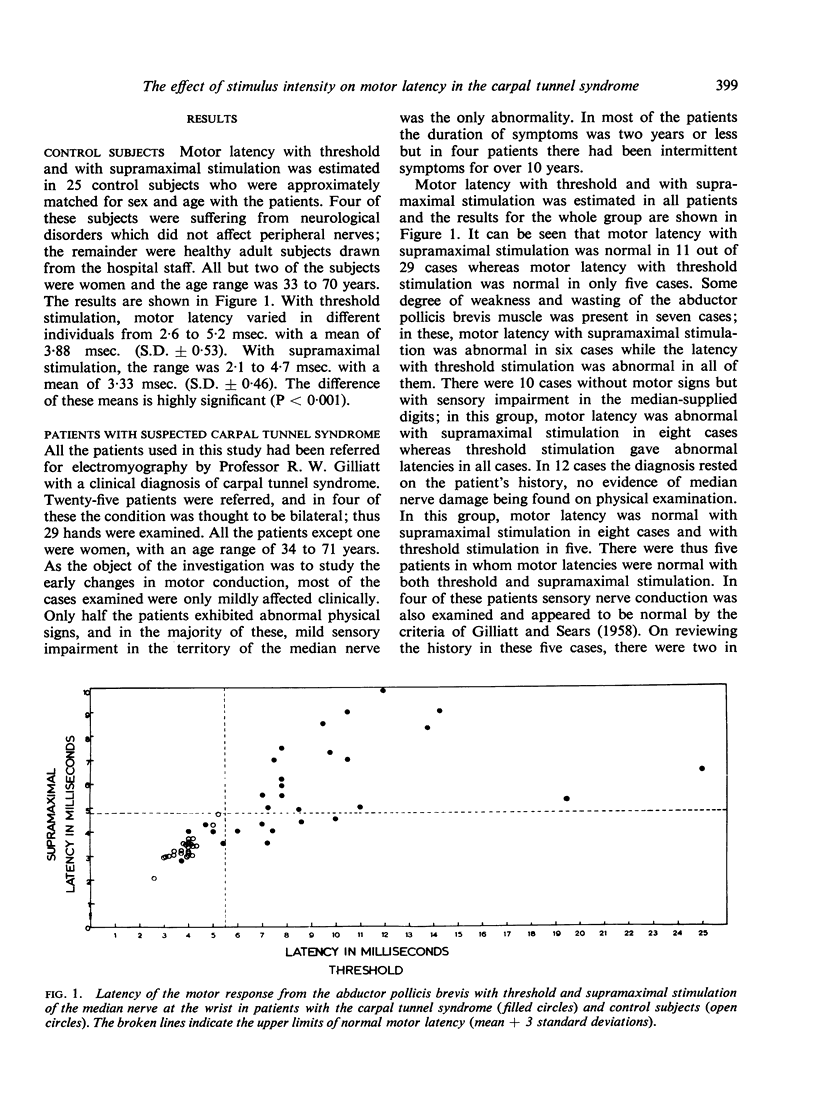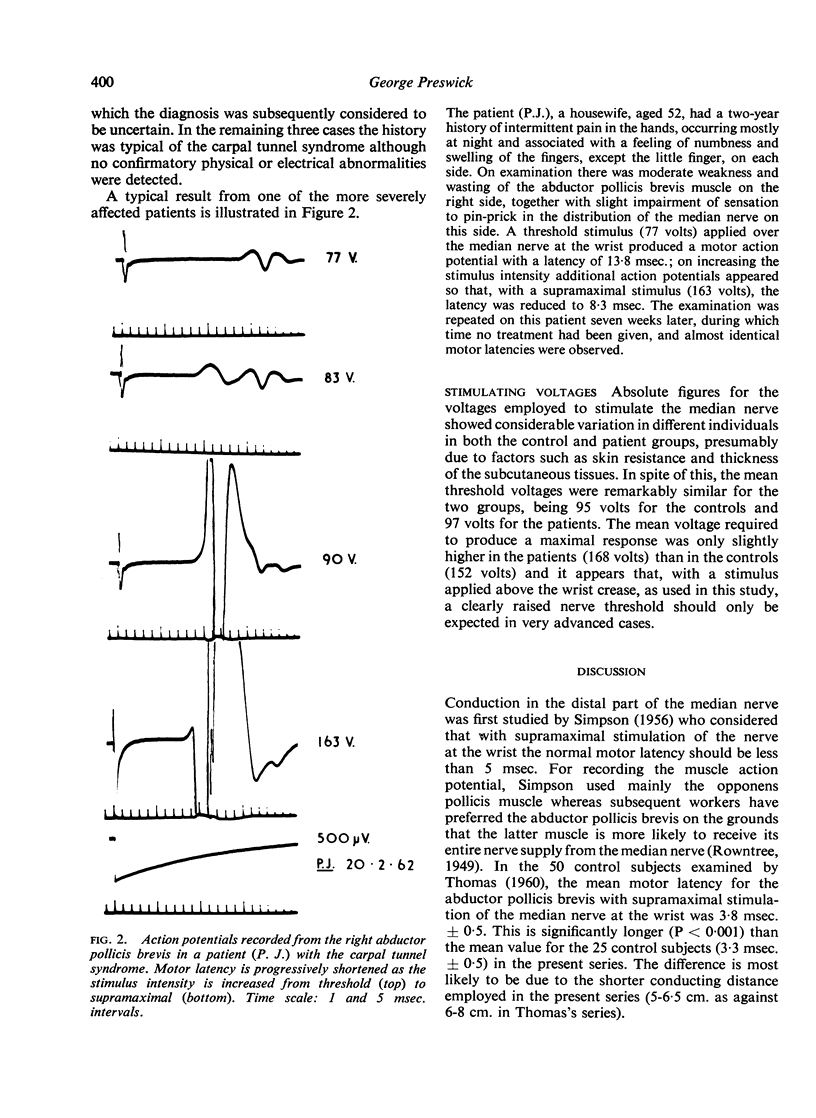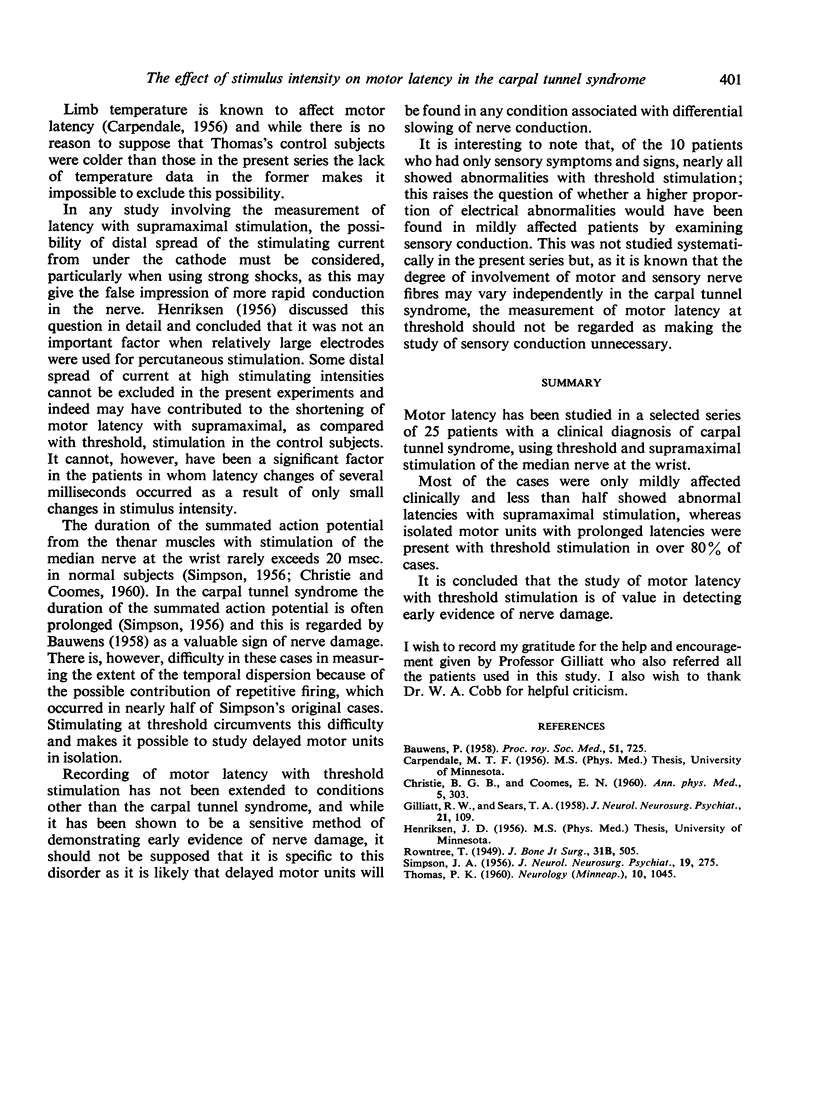Full text
PDF



Selected References
These references are in PubMed. This may not be the complete list of references from this article.
- BAUWENS P. On the fringes of electrodiagnosis. Proc R Soc Med. 1958 Sep;51(9):725–732. [PMC free article] [PubMed] [Google Scholar]
- CHRISTIE B. G., COOMES E. N. Normal variation of nerve conduction in three peripheral nerves. Ann Phys Med. 1960 Nov;5:303–309. doi: 10.1093/rheumatology/5.8.303. [DOI] [PubMed] [Google Scholar]
- GILLIATT R. W., SEARS T. A. Sensory nerve action potentials in patients with peripheral nerve lesions. J Neurol Neurosurg Psychiatry. 1958 May;21(2):109–118. doi: 10.1136/jnnp.21.2.109. [DOI] [PMC free article] [PubMed] [Google Scholar]
- ROWNTREE T. Anomalous innervation of the hand muscles. J Bone Joint Surg Br. 1949 Nov;31B(4):505–510. [PubMed] [Google Scholar]
- SIMPSON J. A. Electrical signs in the diagnosis of carpal tunnel and related syndromes. J Neurol Neurosurg Psychiatry. 1956 Nov;19(4):275–280. doi: 10.1136/jnnp.19.4.275. [DOI] [PMC free article] [PubMed] [Google Scholar]
- THOMAS P. K. Motor nerve conduction in the carpal tunnel syndrome. Neurology. 1960 Dec;10:1045–1050. doi: 10.1212/wnl.10.12.1045. [DOI] [PubMed] [Google Scholar]


